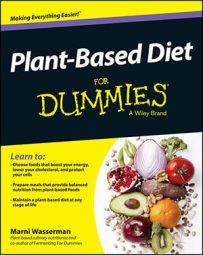You can approach a gradual implementation of a plant-based diet in two ways. You want to focus either on what you can eliminate or what you can add in. Adding in is not as scary as taking something out. If you decide that a gradual transition is for you, decide whether to eliminate foods or add them. To help you out, here are some guidelines for both approaches.
The process of eliminating non-plant-based foods
When you decide to transition slowly to a plant-based diet, you can take two different paths: You can eliminate non-plant-based foods, or you can add plant-based foods. Of the two gradual approaches, choosing to eliminate non-plant-based foods is probably more difficult.
Giving things up that you like and are familiar with is definitely a challenge, but having a plan to phase things out makes it a lot more doable. Everyone is different, and it’s important to go with what works for you, but here’s the recommended order for taking foods out of your diet over the course of a few weeks or a few months:
Red meat:
The heaviest of the animal-based foods should only be consumed once in a while. Your body has to work hard to break it down. Look to minimize your intake each week, working toward total elimination. Try consuming red meat only on weekends and reducing further from there.
Chicken and other poultry:
Chicken is a staple in most homes. It’s lighter than red meat, so you can start at a higher consumption frequency. Try reducing your poultry intake to three meals a week to start and going down from there.
Fish:
This is the lightest of the animal-flesh foods, but it’s not as commonly consumed as poultry. Look at reducing your intake to one to two servings per week and then reducing that intake over time.
Cheese, milk, and other dairy:
This is usually the hardest for people to give up. Most of us have an addiction to dairy. Try to consume dairy foods only one to two times per week until you wean yourself off of them completely. You can find other snacks as alternatives to help you through your transition.
Many people still consume dairy on a plant-based diet. If you’re among them, opt for goat- or sheep-derived milks and cheeses. They are cleaner, higher in nutrients, and can be digested by the human body much more easily than cow dairy.
Eggs:
These tend to be a staple for vegetarians, but “Everything in moderation.” Eggs shouldn’t be consumed every day. Save them for special occasions, if at all.
If you want to eliminate foods meal by meal, you can choose one full day each week to go plant-based or choose a few meals throughout the week. Choose days or meals that work well with your lifestyle.
For example, you may want to do your plant-based meals on days when you have time to experiment with new recipes, rather than trying to squeeze it in after working late and before the kids’ homework time.
The adding-in process
In this process, you focus on adding new items to your diet on a regular basis. Choosing some plant-based essentials helps smooth the transition and give you a healthy and balanced start.
Green leafy vegetables: Add one new green vegetable each week. Also look to add as many leafy greens to as many meals during the day as possible. They nourish you and provide your body with vitamins and minerals. Some examples are spinach, kale, and arugula.
Non-dairy milk, such as rice or almond milk: Sometimes, totally switching the milk you drink or put in your cereal is too drastic. You can start transitioning by doing a mix of dairy and non-dairy milk, gradually changing the ratio over time.
Beans, tofu, tempeh, and quinoa: Serve these alongside your meat for one or more meals a week or day so you can get used to them, and eventually replace your meat with these options.
Whole grains: Experiment by adding different whole grains, such as quinoa, brown rice, and millet, to the base of burgers or meatloaf.

